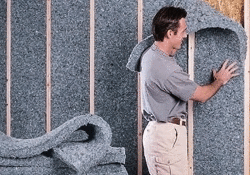LIVING ROOM INTERIOR CEILING INTERIOR WORK

Continuous platform is needed when papering a ceiling. Tie and nail boards and pad the ladder stiles for this arrangement on an L-shaped landing and stairs. Scaffold tower A scaffold tower is far safer and easier to work from than a ladder because it is more stable. It also provides access to a larger working area. Although a tower is used mainly for exterior jobs, it can prove just as useful inside tall rooms and, particularly, in stairwells. Scaffold poles in many different sizes can be bought or hired and they come with very clear instructions on how they should be safely erected. Pay close attention to the details for locking sections together and double check that the frame is completely vertical. Use a spirit level and the adjustable feet to get the base frames level. Some scaffolds for indoor use come with castor-like wheels, which you must lock securely once the tower has been pushed into its correct position to prevent it shifting about. A scaffold tower can be built straight up to a considerable height for exterior work, or indoors on a staircase. Using tools Buying the best tools you can afford and looking after them properly is common-sense advice. There is no doubt that good tools used well will produce top-quality work. However, it does not matter how much you pay for something if you fail to use it properly. You will not produce good work and, more important, you may endanger or harm yourself. Concealing cables and pipes beneath the surface of plastered or partition walls is a neat solution. The safety rule when routing concealed cables and pipes is that they should always run either vertically or horizontally, never diagonally. This ensures that anybody making fixings into the wall in the future knows where to expect them to be. However, unless you know for a fact where pipes and cables are, using a cable and pipe detector will prevent any nasty surprises. Hold the saw firmly with your index finger pointing in the' direction of the cut. Keep a firm grip on the piece when starting, and saw gently to stop the blade jumping. Hand tools Keep all your tools sharp, clean, and in a good state of repair, and store them in dry conditions where there is no danger of rust forming on them. Bear in mind that a blunt or damaged tool, such as a saw or a chisel, is not only harder to use, and will not produce top-quality results, but it is also more dangerous - both to yourself and, potentially, to anybody else in the immediate vicinity. Whenever you are going to use a saw, first firmly secure the piece of work to a bench. Position the work so that the cutting line just overhangs the edge of the bench. This ensures that it has maximum support and also prevents the piece whipping about as you saw. Position yourself so that the Support the offcut when close to finishi to prevent the saw suddenly breaking. Supporting one side of the piece secure always cut on the forward stroke. saw becomes an extension of your arm with your index finger pointing in the direction of the cut. Draw the saw gentl and cleanly back and forth, cutting on t forward stroke only. Toward the end of cut, support the offcut to prevent the s: blade suddenly breaking clear and ripp the wood. If you have to put a lot of for behind the saw in order to get it to cut, then your saw needs to be sharpened. A craft knife is an essential part of a kit. Make sure that the blade is sharp ar that you use the correct type of blade fe the material being cut - whether it is pa floor tiles, or carpet. Remember to keep your fingers well away from the line often cut, and do not exert too much pressure the blade may slip sideways. Knives with B • retractable blades are much the safest to use, and the types that featu re snap-off blades ensure that you always have a sharp edge to work with. Dispose of old blades safely.